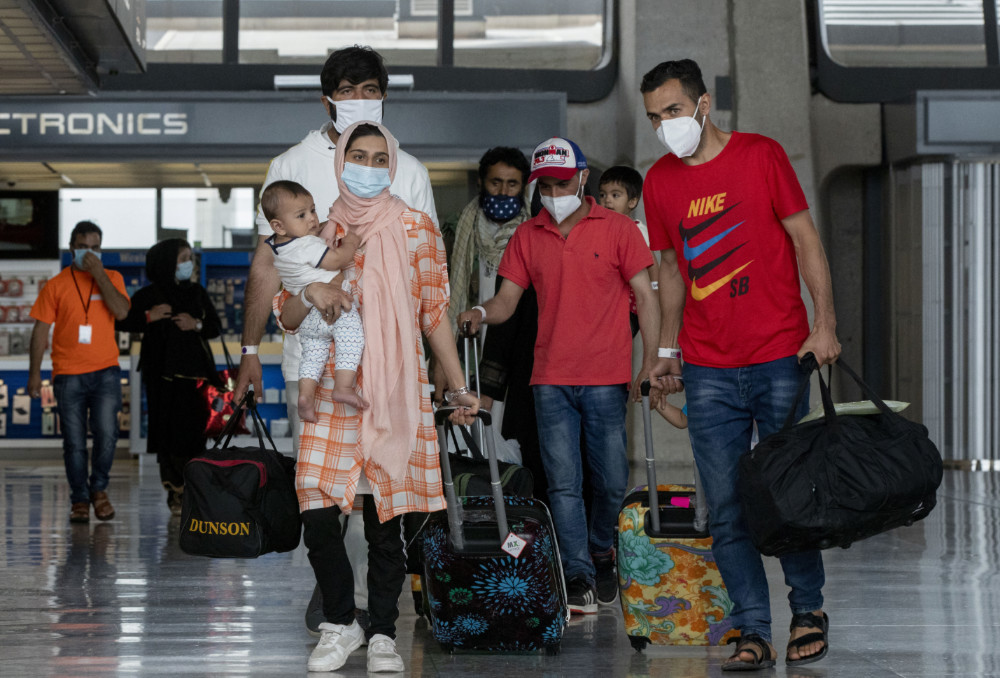
Strangers in a Strange Land


The numbers aren’t firm, but federal officials expect that roughly 50,000 Afghans will come to the U.S. as refugees following America’s withdrawal from Afghanistan. Their arrival will be bittersweet — free from the threat of the Taliban but bewildered by a strange and sometimes hostile country.
Maryam Kia-Keating — a professor in the Department of Counseling, Clinical and School Psychology in UC Santa Barbara’s Gevirtz Graduate School of Education — said an adjustment period is to be expected.
“It’s a very sudden forced displacement and it’s a radical change in culture and language,” she said, “and you’re suddenly leaving your home with next to nothing in terms of your belongings and a lot of fear in terms of what you’ve perhaps witnessed, as well as uncertainty about your future.”
Sadaf Delawar, a master’s student in UCSB’s Department of Global Studies, knows all about it. She was a toddler when she left Afghanistan for the U.S. It was the late 1990s and her family of professionals was being harassed by the Taliban. They eventually settled in Pennsylvania and scratched out a life with a combination of social services and menial jobs.
“My mom was a pharmacist in Afghanistan,” Delawar said, “and while I was growing up she had to work at Walmart and stuff like that, places that were well below what she had studied and who she was. That type of thing happens often.”
Kia-Keating, who has written extensively about refugees’ mental health, especially among youths, said the displaced generally suffer from a range of indignities beyond the trauma of fleeing their homes — poverty, housing and food issues, living in unsafe neighborhoods and more.
“These are the kinds of things that we want to consider when trying to support newcomers to our communities,” she said.
So what can you do if you want to help refugees adjust to life here?
“First and foremost,” Kia-Keating said, “refugees need welcoming communities that embrace the idea of having a new group come in. And not only ready to help them get settled, but also to appreciate the ways that they can potentially contribute to the new communities. So rather than just seeing them as victims, they could see them actually contributing, and that many refugees come in with incredible skills, training and education.”
This resonates with Delawar, whose studies focus on historical analyses of Afghan refugees.
“That is very fair,” she said. “Yes. Welcoming communities. People willing to help, willing to listen, willing to guide them. And people who are just sympathetic and understanding of a situation that they had no control over.”
Delawar said she understands how some people might fear “a horde of people getting on these planes and they’re completely different.” But those fears, she added, ignore the reality of a forcibly displaced people who don’t come here to be tourists on some grand adventure.
Her advice: “Just see groups and families as people who could add to the multicultural fabric of our nation, see it as an opportunity to have compassion and be welcoming.”
As Kia-Keating noted, there are more than 80 million people around the world who’ve been forced to flee their homes. Of those, about 26 million are refugees and roughly half of those are children under the age of 18.
“Understand that the numbers are pretty staggering, and there’s a high percentage of young people involved in these situations of forced displacement,” she said. “So if it’s hard to have compassion for adults, perhaps it’s easier for people to realize that children are at the mercy of the environment around them and have nothing to do with the war or the conflict or the politics.”
What might a welcoming community look like? Kia-Keating notes that refugee settlement decisions are made at the federal level, and often the first contact refugees have is with resettlement agencies. Volunteering with these agencies, if you have the time, can provide needed early support.
“There are also ways to try to get to know people through networks,” she said. “Doing the neighborly thing can go a long way, just checking in and saying, ‘Hey, welcome to our community. We’re happy you're here. What can we do to help support you? Here’s my phone number, call me if you need anything.’
“Economic issues are one of the biggest first hurdles for people arriving,” Kia-Keating continued. “If you have opportunities or know of opportunities or can help them connect to opportunities, you usually find that families are very anxious to work and contribute and have an incredibly strong work ethic.”
For Delawar, being welcoming can mean small gestures like bringing refugees a bag of fruit or a plate of cookies. It’s not only a kindness, but culturally appropriate with Afghans, she said.
“That definitely would be socially acceptable,” she said. “You would probably be offered tea, which is what we do.”
As a cultural matter, Delawar noted that there’s one big difference between Afghans and Americans: Afghans don’t make eye contact in situations when they are being respectful or don’t know you well.
“Eye contact is considered rude,” she said. “And so if you’re not getting a lot of eye contact, it’s not because someone is lying like we consider it in American culture. In my culture it’s considered more polite and deferential to avoid eye contact in certain situations.”
Finally, keep in mind Afghans are a proud people with a rich ancient culture, and beautiful traditions. While refugees are grateful to be safe from attack or persecution, Delawar said, they’re not thrilled to be away from their homeland.
“It is not our desire to live abroad,” she said. “We do not want that. What we want, most of all, is a stable, peaceful Afghanistan so that we can be with our own people.”



